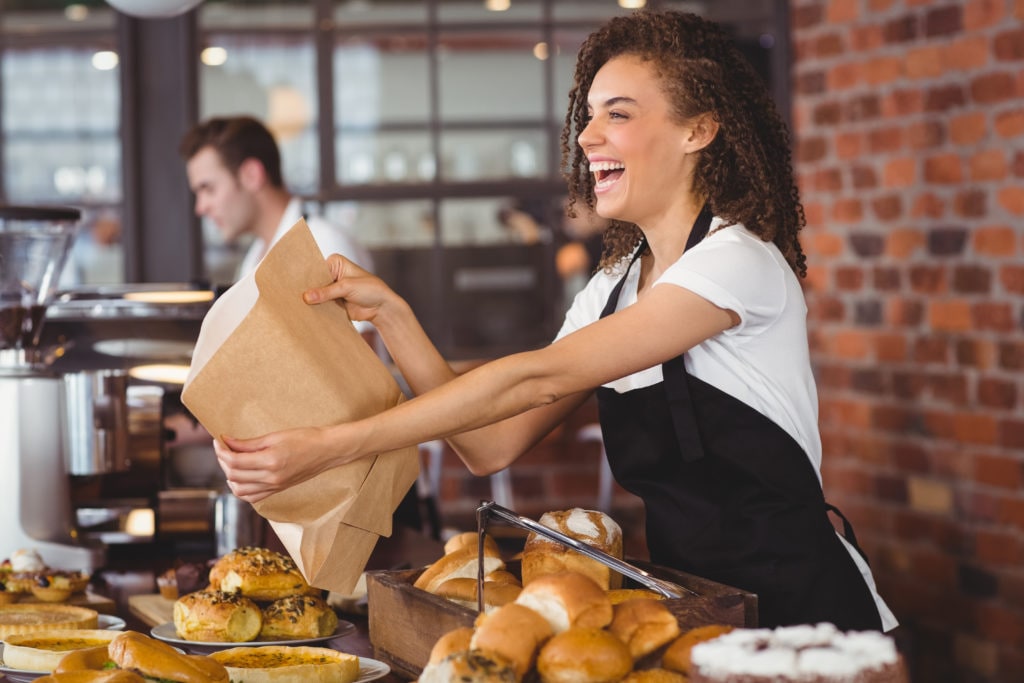
This past year rocked the restaurant industry, with the pandemic forcing the shutdown of indoor dining. Even with the return of indoor operations as of January 2021, dine-in has seen a 65.91% year-on-year decline, which accounts for $240B in losses. Just as it looked like we were ready to return to indoor dining, the Delta variant surge brought back fears of restrictions that could impact the industry. As we reflect on the shutdown of 2020, we continue to navigate 2021 and look forward to 2022 – and restaurants need to explore technological solutions to make revenue and future proof their business.
The pandemic taught most restaurants that sticking to traditional standards of operations and sales is not enough to make it through tough times – they need to be nimble and adopt digital sales methods in order to survive. While larger restaurants made the investments in 2020, small operations have hoped they could hold out on adopting digital solutions because of cost, the shortage of time and/or discomfort with technology.
Now it’s clear that some level of digital ordering will be an ongoing requirement for restaurants of all sizes. By the end of 2021, there will be a projected 44.1M users of food delivery apps. The impact has been felt throughout the industry – from the restaurant to the nimble customer – and adapting to these changes will help businesses thrive. Restaurants face new challenges in 2021, but tech can still provide the back-of-the-house support needed to help them survive.
Understanding the changes in consumer and workforce
The shift within the industry has been felt by consumers and employees alike, leaving restaurants to deal with a variety of hurdles that have never been seen before. Most businesses are experiencing a worker shortage, with 144% turnover rate at fast-food restaurants and 70% more job vacancies in the industry when compared to pre-pandemic rates. Some of the biggest reasons behind worker shortages are wages and benefits, childcare, opportunities in other industries, and/or concerns about mental and physical health. In response, restaurants increased hourly wages by 10% in Q2 – but this has not been enough to tempt workers back, causing delays in service and operational struggles.
For diners who have returned to eating indoors, longer wait times, while understandable, have become a deterring factor for dining-in. Restaurants need to be able to do more with less staff. Technology not only increases efficiency, but it allows for improved social distancing in the dining room and behind the register. Staff won’t be stacked on top of each other waiting to enter orders, answer phones and ring up diners. Overall, we all appreciate a little more space these days – and technology that can help with worker shortages also creates the distance needed for safety and comfort.
Leveraging technology to fill the gaps
With worker shortages and customers looking for enhanced experiences that prioritize safety, technology is able to address some of those obstacles that restaurants face today. Technology in the back or front of the house can streamline processes and improve overall operations. Kitchen automation technology is on the industry’s radar, as 91% of restaurants intend to invest in it. These solutions allow restaurants to view, track and fulfill orders via digital tickets in back-of-house, replacing traditional paper tickets and kitchen printers. When a person isn’t required to fulfill this task, that valuable human resource can be used for tasks such as billing, inventory, CRM, customer service and/or marketing. Technology can help restaurants put people where they will have the most impact and allows them to focus on the most important things.
For smaller eateries who have been reluctant to adopt technology, the one piece of technology that should be the highest priority is having an online presence. While many restaurants leverage applications provided by Square, DoorDash or Ubereats, consumers want to skip the middleman, with 67% saying they would prefer using a restaurant’s own website or app to order. One thing over the past year that became clear is the value of an established online ordering tool. It is easier to install and maintain an ordering app when things seem quiet, than trying to find and deploy one during a crisis. In other words, don’t wait for the next surge to set up a mobile ordering app. You don’t want to be working out the kinks as all your customers flood you with orders in the digital channel. Whether leveraging third-party vendors or establishing a branded app for your restaurant, adopting this technology has become a must for businesses who want to survive and stay competitive.
Diversifying your revenue streams
Restaurant owners experienced the decline of indoor operations and prompted individuals to eat at home, depriving many businesses of take-out income because they weren’t ready for to-go orders. What the downturn should teach all restaurants is that having different revenue streams is necessary for survival. If another ban on indoor dining should happen, restaurants need a strategy that includes other options. For example, packaging coffee or non-perishable food, gift cards, catering or even event hosting can provide ways for restaurants to create new revenue streams when they can’t operate their dining rooms.
The need of future-proofing your business has been accelerated by the events of the last year. The realities of how consumers and the restaurant industry as a whole have changed should highlight the importance of adapting. Listen to the needs of your employees and customers. This will be key to addressing new problems that will no doubt continue to pop up from the pandemic. By leveraging technology to assist in operations, restaurants can better streamline processes and create ways for online order fulfillment. As we look toward the future of the industry, we all need to learn from the past to come out ahead – no matter what that future holds.

Nicole Leisle
About the author:
As VP of Product Marketing of Ordrslip, a Bitwise Industries company, Nicole Leisle and her team oversee and execute all aspects of the company’s national marketing, branding and public relations.




